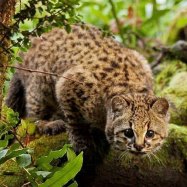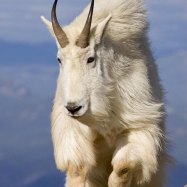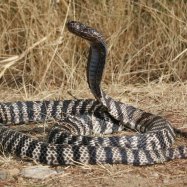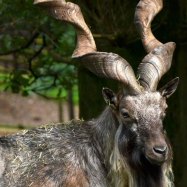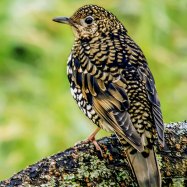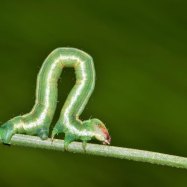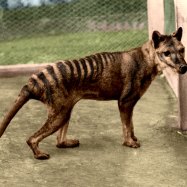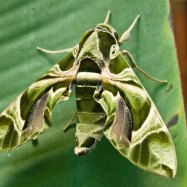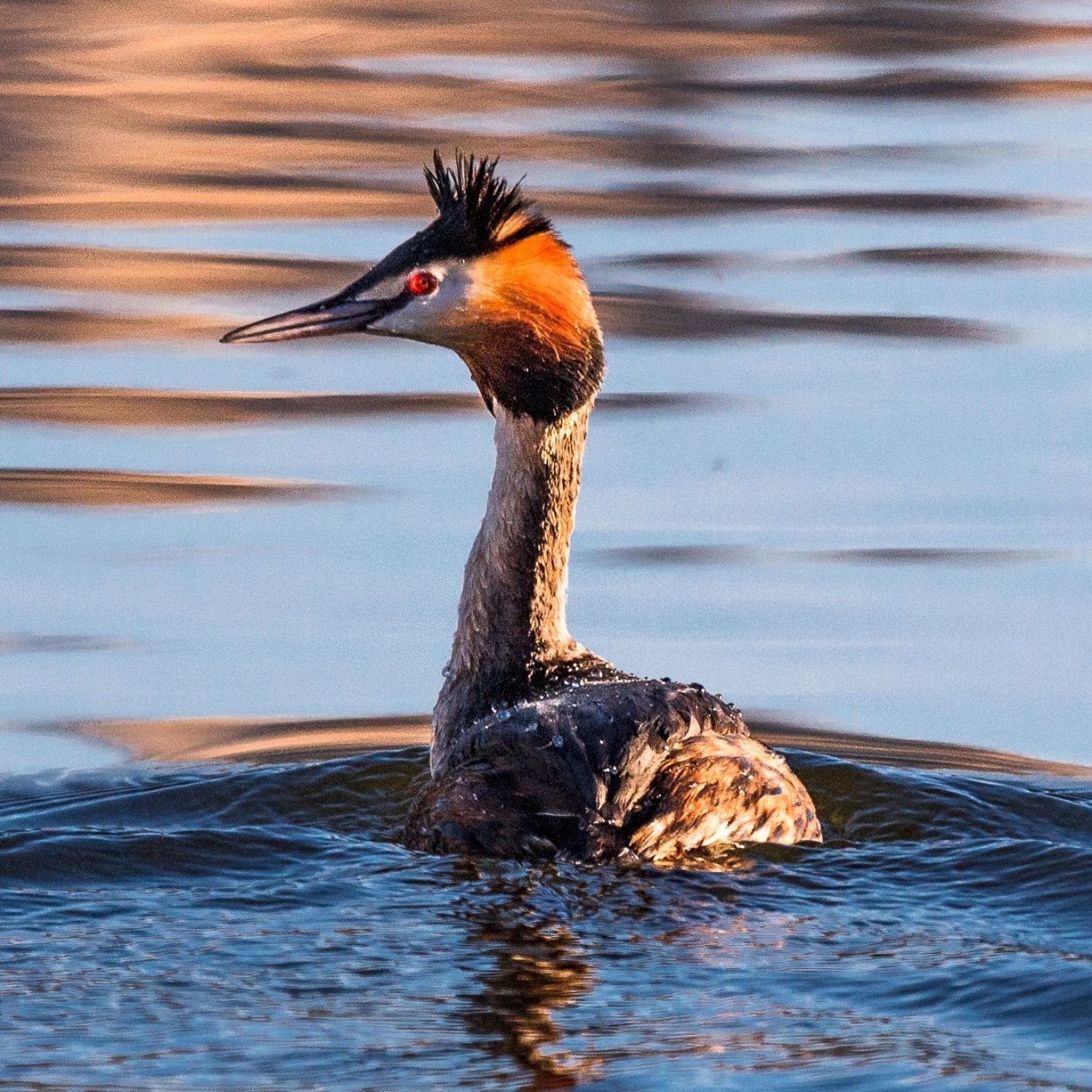
Grebe
20-29 inches
The Grebe, a slender and elongated waterbird with a long neck, can be found in the Western United States, Western Canada, and Mexico. Belonging to the family Podicipedidae, this bird's length ranges from 20-29 inches, making it a unique sighting for birdwatchers and nature enthusiasts in these regions. Keep an eye out for this graceful beauty on your next outdoor adventure! #Grebe #birdwatching #naturelovers
Animal Details Summary:
Common Name: Western Grebe
Kingdom: Animalia
Habitat: Freshwater lakes, marshes, and ponds
The Beauty and Elegance of the Western Grebe: A True Master of Freshwater Habitats
When it comes to birds, most people tend to think of the colorful and vibrant species that grace our backyards and gardens. However, not all birds are known for their flashy feathers and melodic songs. In fact, some species stand out for their simple yet striking appearance and unique characteristics. One such bird is the Western Grebe, a graceful and elegant waterbird that calls North America home Grebe. From its stunning appearance to its impressive adaptation to freshwater habitats, the Western Grebe is a truly fascinating animal that deserves our attention.The Basics of the Western Grebe
First, let's cover the basics. The scientific name of the Western Grebe is Aechmophorus occidentalis, and it belongs to the animal kingdom, phylum Chordata, and class Aves. This means that it is a bird and shares characteristics with other avian species such as having feathers and wings for flight.The Western Grebe belongs to the order Podicipediformes, which translates to "feet at the buttocks." This might seem like a strange name, but it accurately describes the placement of the bird's feet near its tail. As for its family, the Western Grebe belongs to the Podicipedidae family, which includes other species of grebes.
The Western Grebe, as the name suggests, is primarily found in western regions of North America. Its geographical distribution includes North America, with its country of origin being the United States, Canada, and Mexico Gadwall. Within these countries, the Western Grebe is typically found in the western parts of the United States and Canada, as well as Mexico. It is a common sight in freshwater lakes, marshes, and ponds, where it can easily find its main source of food.
The Stunning Appearance of the Western Grebe
The Western Grebe is known for its striking appearance, with its black and white coloration standing out against the backdrop of the freshwater habitats it frequents. This contrast in colors is not only aesthetically pleasing but also serves a purpose in helping the bird camouflage itself from predators. The black and white feather pattern acts as a disruptive coloration, making it difficult for predators to distinguish the bird's shape, especially when it is swimming.In addition to its coloration, the Western Grebe also has a slender and elongated body with a long, elegant neck. This body shape is ideal for navigating through the water and diving for food. Unlike other birds that dive for food, the Western Grebe does not have webbed feet. Instead, its feet are lobed, meaning they have broad, flattened toes that help propel the bird through the water and aid in its swimming and diving abilities.
The Western Grebe's Diet and Feeding Method
As a carnivorous bird, the Western Grebe's diet primarily consists of small fish, crustaceans, and insects. Its feeding method is quite impressive, as it involves a unique behavior known as "rushing." This behavior is a synchronized display in which two birds swim rapidly towards each other, then abruptly turn and dive underwater. This sudden movement is thought to startle the fish and make them easier to catch.Not only is this behavior effective in catching prey, but it also serves a purpose in courtship and pair bonding. It is often observed during the breeding season, and the synchronized rushing display is used to strengthen the bond between two mating partners.
Adaptation to Freshwater Habitats
One of the most remarkable things about the Western Grebe is its adaptability to freshwater habitats. Unlike other birds that prefer marine or coastal environments, the Western Grebe is specialized to live in lakes, marshes, and ponds. Its lobed feet, mentioned earlier, are a key adaptation that allows the bird to navigate through the water and hunt for food effectively.Another crucial adaptation is its oily feathers. Like other waterbirds, the Western Grebe has dense, waterproof feathers that help it stay afloat and insulated in the cold water. However, what sets the Western Grebe apart is the specialized oil glands on its back that produce a unique type of oil. This oil is then spread through the bird's feathers, providing additional waterproofing and insulation. This adaptation is essential for the survival of the Western Grebe in the frigid freshwater habitats it calls home.
The Life of a Western Grebe
The life of a Western Grebe is divided into two main periods – breeding season and non-breeding season. During the breeding season, which typically starts in late spring, the birds form monogamous pair bonds and begin nesting. The pair builds a floating nest made of plants, often anchored to vegetation in shallow water. Once the eggs are laid, both parents take turns incubating the eggs, which hatch after about four weeks.After the chicks hatch, they are cared for by both parents, who feed them small fish and other aquatic creatures. This is where the Western Grebe's synchronized rushing behavior comes into play, as it allows the pair to catch enough food to sustain themselves and their offspring. The chicks fledge after about 10-12 weeks and are fully independent in their second year.
During the non-breeding season, Western Grebes gather in large groups on lakes and other bodies of water. This behavior, known as "rafting," plays a vital role in protecting the birds from predators. By gathering together, the birds can keep an eye out for danger and quickly escape if necessary.
Conservation Status and Threats
The Western Grebe is currently listed as a species of least concern on the International Union for Conservation of Nature (IUCN) Red List. This means that the bird is not facing any immediate threat of extinction. However, there are still some concerns about its population numbers and threats to its habitat and way of life.One of the main threats to the Western Grebe is the loss and degradation of its freshwater habitats. This can be attributed to human activities such as dam construction, pollution, and development along the water's edge. These activities not only disrupt the bird's nesting and feeding grounds but also impact the water quality and availability of food. Climate change is another major concern, as it can affect the availability of suitable habitat and prey for the Western Grebe.
What Can We Do to Help?
As with many other species, the key to protecting the Western Grebe lies in preserving its habitat and promoting responsible human activity. Governments and conservation organizations are currently working on initiatives to protect and restore the bird's freshwater habitats. Individual actions, such as reducing water pollution and avoiding development near bodies of water, can also make a difference in preserving the Western Grebe's way of life.Additionally, supporting ecotourism can also have a positive impact on the Western Grebe's conservation. By participating in responsible wildlife tours and activities, tourists can contribute to the local economy and promote the importance of preserving the bird's habitat. It is also essential to remember to always observe wildlife from a safe distance and follow all regulations and guidelines.
In Conclusion
The Western Grebe may not be as well-known or flashy as some other bird species, but it is undoubtedly a fascinating and impressive animal. From its striking appearance and unique adaptations to its synchronized behavior and adaptability to freshwater habitats, the Western Grebe is a true master of its environment. However, like many other species, it faces threats and challenges that require our attention and action. By learning more about this beautiful waterbird and taking steps to protect it, we can help ensure that future generations can continue to admire the beauty and elegance of the Western Grebe in the wild.

Grebe
Animal Details Grebe - Scientific Name: Aechmophorus occidentalis
- Category: Animals G
- Scientific Name: Aechmophorus occidentalis
- Common Name: Western Grebe
- Kingdom: Animalia
- Phylum: Chordata
- Class: Aves
- Order: Podicipediformes
- Family: Podicipedidae
- Habitat: Freshwater lakes, marshes, and ponds
- Feeding Method: Carnivorous
- Geographical Distribution: North America
- Country of Origin: United States, Canada, Mexico
- Location: Western United States, Western Canada, and Mexico
- Animal Coloration: Black and white
- Body Shape: Slender and elongated body with a long neck
- Length: 20-29 inches
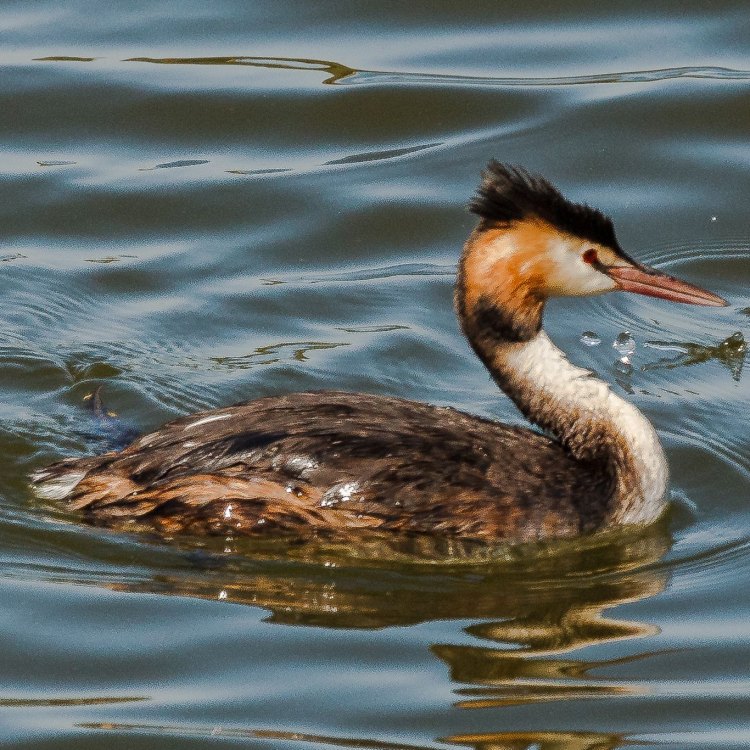
Western Grebe
- Adult Size: Large
- Average Lifespan: 7-12 years
- Reproduction: Monogamous
- Reproductive Behavior: Mating displays involve elaborate dancing and preening
- Sound or Call: Loud trumpeting call
- Migration Pattern: Migratory
- Social Groups: Colonial
- Behavior: Excellent swimmers and divers
- Threats: Habitat loss, pollution, predation
- Conservation Status: Least Concern
- Impact on Ecosystem: They play a role in controlling fish populations
- Human Use: Hunted for sport and food in the past
- Distinctive Features: Striped face pattern, long slender neck
- Interesting Facts: They perform an elaborate courtship display known as the 'weed ceremony'
- Predator: Bald eagle, coyote, raccoon
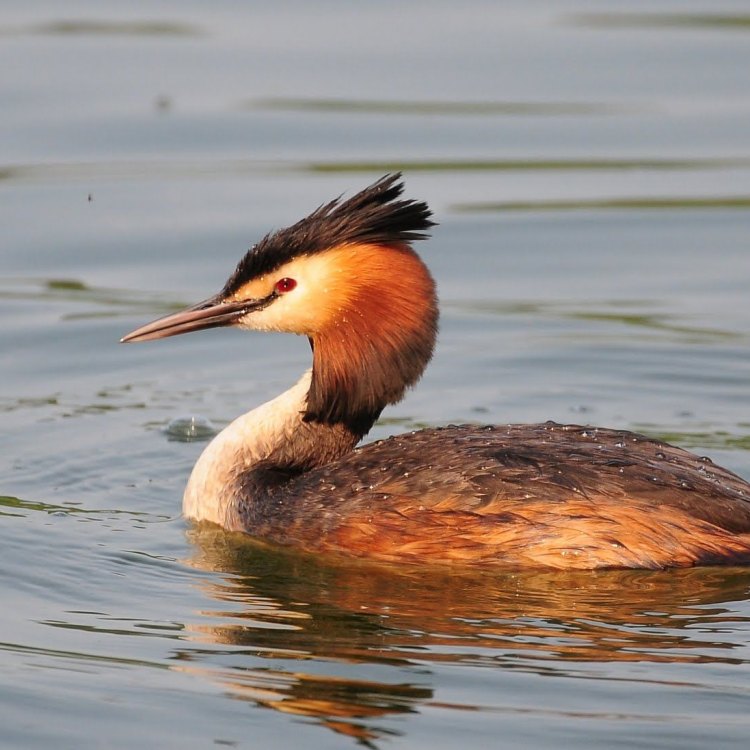
Aechmophorus occidentalis
Welcome to the World of Fascinating Grebes - Majestic Birds of the Water
In the vast and wondrous world of birds, Grebes stand out as one of the most fascinating and unique species. These majestic creatures, known for their exceptional swimming and diving abilities, have captured the hearts of birdwatchers and nature enthusiasts for centuries. With their distinctive features and interesting behavior, Grebes have become a beloved member of the avian kingdom.Grebes, also known as the Podicipediformes, belong to a family of freshwater diving birds and are widely distributed across the globe PeaceOfAnimals.Com. These birds are predominantly found in North and South America, Europe, Africa, and Asia. They reside in freshwater bodies such as lakes, ponds, and marshes, making them a common sight for those living near these habitats. With fifteen different species of Grebes recognized, they vary in size, coloration, and behavior, but all possess the same unique characteristics that make them stand out in the bird world.
Let's delve deeper into the world of Grebes and discover what makes them such a captivating species.
Size, Lifespan, and Reproduction
Grebes are classified as large birds, with an average size ranging from 12 to 32 inches and a weight of 9 to 11 pounds. These birds have a long, slender neck, a pointed bill, and webbed feet, making them excellent swimmers and divers. Their size and physical abilities allow them to navigate through the water with ease, making them experts at catching fish and other small aquatic prey.The average lifespan of a Grebe is between 7 to 12 years, with some species able to live up to 20 years in captivity. Like many other birds, Grebes are monogamous, meaning they mate with one partner for life Golden Pyrenees. During the breeding season, which varies depending on the species and location, Grebes engage in an elaborate courtship display known as the 'weed ceremony.' This unique ritual involves the birds gathering weeds and placing them on top of the water, then gracefully diving and resurfacing with the weed in their bill, creating a grand spectacle for potential mates.
After mating, Grebes build their nests on floating vegetation, where they hatch and raise their young. The parents take turns incubating the eggs and caring for the chicks, showing exceptional teamwork and dedication to their offspring.
Mating Displays and Vocalizations
One of the most striking traits of Grebes is their elaborate and fascinating mating displays. These birds have a unique way of attracting mates, involving dancing, preening, and vocalizations. Their courtship displays are a visual treat, involving synchronized movements and intricate rituals, making them a sight to behold.Grebes have a loud trumpeting call, which they use to communicate with their mates and other members of their colony. This call can be heard from a considerable distance and is often used during courtship displays or to defend territory from potential predators.
Social Behavior and Threats
While Grebes are monogamous, they are also colonial, meaning they gather and nest in groups. This social behavior extends to their migration patterns, with many species of Grebes migrating long distances in flocks to their wintering grounds. During non-breeding seasons, Grebes can be found in large numbers, creating a beautiful sight for bird lovers.Sadly, Grebes are facing many threats today, with habitat loss, pollution, and predation being the primary culprits. As their habitats are destroyed or polluted, Grebes struggle to find suitable places to nest and forage for food, leading to a decline in population. They are also vulnerable to predators such as bald eagles, coyotes, and raccoons, who prey on their eggs and chicks.
Conservation Status and Impact on Ecosystem
Despite these threats, Grebes are currently classified as "Least Concern" on the IUCN Red List of Threatened Species. This means that their population is stable, and they are not facing significant risks of extinction. However, continued conservation efforts are necessary to ensure that Grebes thrive and remain a vital part of our ecosystem.Grebes play an essential role in controlling fish populations, as they feed on small fish and other aquatic animals. By maintaining a balance in the ecosystem, Grebes help keep fish populations in check, preventing potential overpopulation or depletion of fish stocks. They also provide a food source for predators and are significant contributors to nutrient cycling in freshwater habitats.
Human Use and Distinctive Features
Grebes have been hunted for sport and food in the past, mainly because of their large size and abundant presence. However, hunting and exploitation have significantly reduced due to conservation efforts and increasing awareness about the importance of these birds for the ecosystem.One of the distinctive features of Grebes is their striped face pattern, which is different for each species and helps with identification. It's an essential adaptation that helps them camouflage and avoid detection from predators. Their long, slender necks also make Grebes stand out, giving them an elegant and graceful appearance as they navigate through the water.
Interesting Facts about Grebes
If you haven't been fascinated enough by Grebes already, here are a few interesting facts that will surely pique your curiosity:- Grebes have legs placed far back on their bodies, which makes walking on land almost impossible for them. They are much more comfortable in the water, using their legs for swimming and diving.
- Some Grebe species, such as the Hooded Grebe, are critically endangered, with a population of only a few hundred individuals left in the world.
- Grebes are excellent divers, with some species able to stay underwater for up to 30 seconds.
- The smallest species of Grebe is the Least Grebe, measuring only about 10 inches in length and weighing just 4 ounces.
- Grebes perform an elaborate courtship dance known as the 'weed ceremony,' which is believed to strengthen the bond between a pair of mates.
Predators of Grebes
As with any other animal, Grebes have their share of predators in the wild. Some of their most common predators include bald eagles, coyotes, and raccoons. These predators may not directly impact Grebe populations significantly, but it's crucial to note that any disturbance in the ecosystem can have rippling effects, affecting all its inhabitants.Conclusion
In conclusion, Grebes are truly fascinating birds with unique features, behavior, and significant impacts on the ecosystem. Their distinctive striped face pattern, long slender necks, and loud trumpeting call make them stand out in the bird world. It's essential to continue conservation efforts and raise awareness about the importance of these majestic birds to ensure their survival for generations to come. Next time you're near a freshwater habitat, keep an eye out for these excellent swimmers and divers, and witness the beauty and wonder of Grebes for yourself.
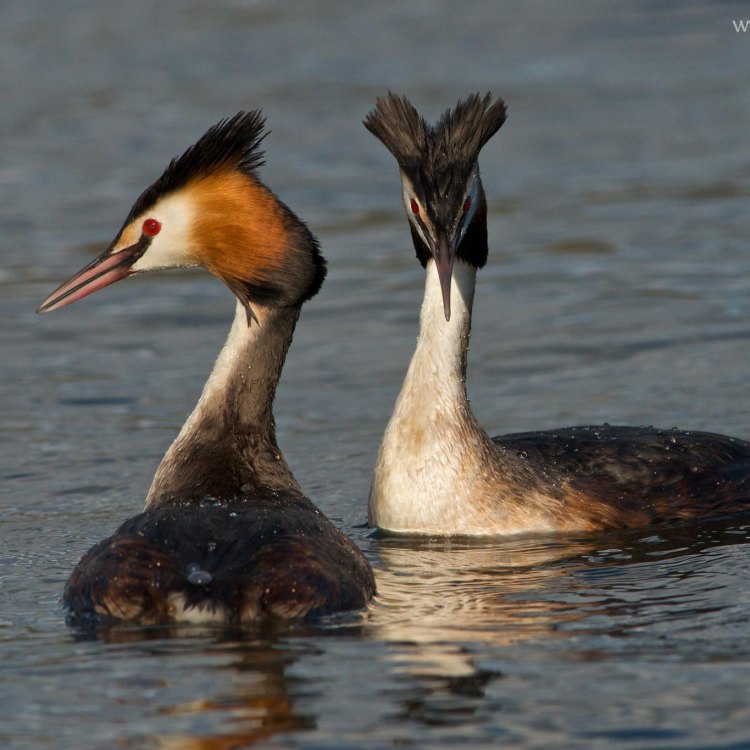
The Beauty and Elegance of the Western Grebe: A True Master of Freshwater Habitats
Disclaimer: The content provided is for informational purposes only. We cannot guarantee the accuracy of the information on this page 100%. All information provided here may change without prior notice.

